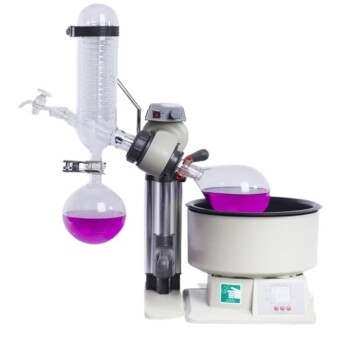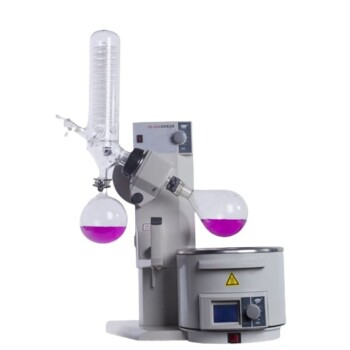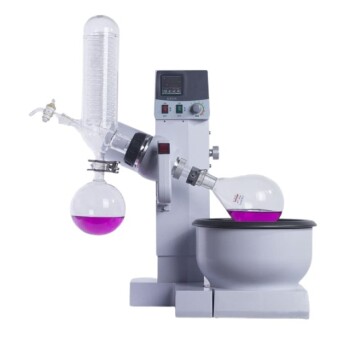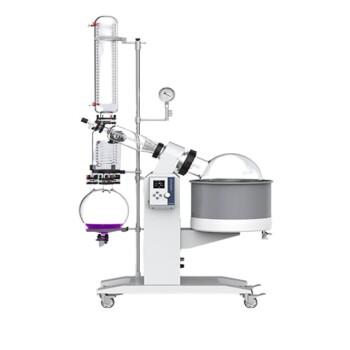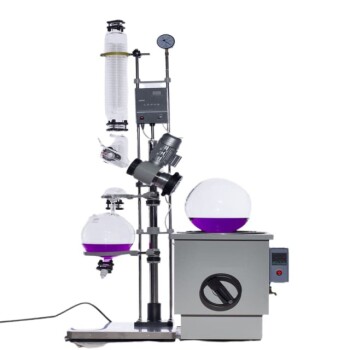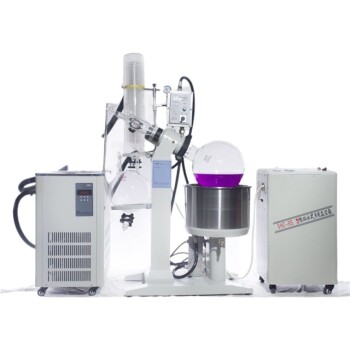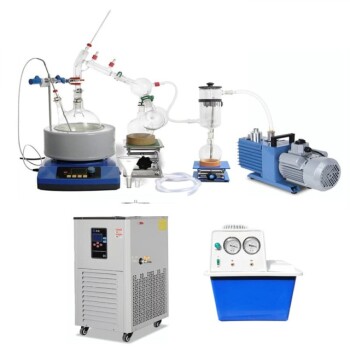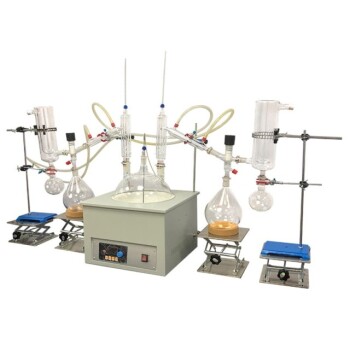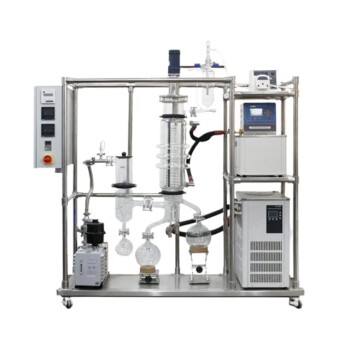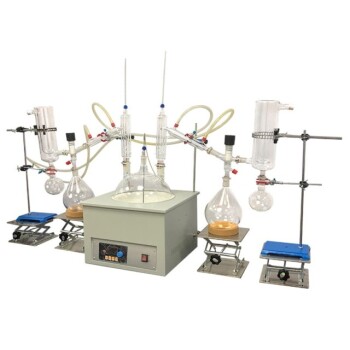Rotary evaporation and distillation are related processes, but they are not the same. Rotary evaporation is a specialized form of distillation that uses reduced pressure and rotation to remove solvents more efficiently and gently. While both processes involve the separation of components based on their boiling points, the key difference lies in what is retained after the process. In distillation, the distillate (condensed vapor) is typically collected, whereas in rotary evaporation, the residue (concentrated compound) is retained in the original flask. Rotary evaporation is particularly useful for solvent removal under reduced pressure, avoiding high temperatures and oxidation, making it ideal for heat-sensitive compounds.
Key Points Explained:

-
Definition and Purpose of Distillation and Rotary Evaporation:
- Distillation: A process that separates components of a liquid mixture based on their boiling points. The distillate (condensed vapor) is collected, and the process often focuses on concentrating specific components, such as alcohol.
- Rotary Evaporation: A specialized form of distillation designed for solvent removal under reduced pressure. The residue (concentrated compound) is retained in the original flask, making it suitable for heat-sensitive materials.
-
Key Differences Between Rotary Evaporation and Distillation:
- What is Retained: In distillation, the distillate is collected, while in rotary evaporation, the residue is retained.
- Pressure and Temperature: Rotary evaporation operates under reduced pressure, lowering the boiling point of the solvent and avoiding high temperatures that could damage sensitive compounds.
- Application: Rotary evaporation is ideal for solvent removal and concentrating compounds, whereas distillation is often used for purifying liquids or separating components like alcohol from water.
-
Mechanism of Rotary Evaporation:
- Vacuum System: Reduces the pressure inside the system, lowering the boiling point of the solvent and enabling evaporation at lower temperatures.
- Rotation of the Flask: Increases the surface area of the liquid, promoting even and stable evaporation while preventing bumping or uneven heating.
- Condenser: Captures the evaporated solvent, which is then collected separately, leaving the concentrated residue in the flask.
-
Advantages of Rotary Evaporation Over Traditional Distillation:
- Gentler Process: Lower temperatures and reduced pressure minimize the risk of oxidation or thermal degradation, making it suitable for heat-sensitive compounds.
- Efficiency: The rotation of the flask accelerates the evaporation process, saving time and energy.
- Versatility: Can be used for a wide range of solvents and compounds, particularly in industries like food, pharmaceuticals, and chemistry.
-
Interchangeability of Terms:
- While "evaporation" and "distillation" are often used interchangeably in the context of rotary evaporators, they are not identical. Evaporation can occur at nearly any temperature, whereas distillation refers to the process of separating components at their boiling points, often under specific conditions like reduced pressure.
-
Practical Applications:
- Distillation: Commonly used in industries like alcohol production, water purification, and chemical synthesis.
- Rotary Evaporation: Widely used in laboratories for solvent removal, concentration of compounds, and extraction of flavors or fragrances without altering their properties.
In summary, while rotary evaporation shares similarities with distillation, it is a distinct process tailored for specific applications, particularly those requiring gentle and efficient solvent removal. Understanding the differences helps in selecting the appropriate method for a given task.
Summary Table:
| Aspect | Distillation | Rotary Evaporation |
|---|---|---|
| What is Retained | Distillate (condensed vapor) is collected | Residue (concentrated compound) is retained |
| Pressure & Temperature | Operates at atmospheric or higher pressure | Operates under reduced pressure |
| Application | Purifying liquids, alcohol separation | Solvent removal, heat-sensitive compounds |
| Mechanism | Boiling points separation | Vacuum system, rotation, and condenser |
| Advantages | Ideal for purification | Gentle, efficient, and versatile |
Need help choosing the right process for your lab? Contact our experts today!
